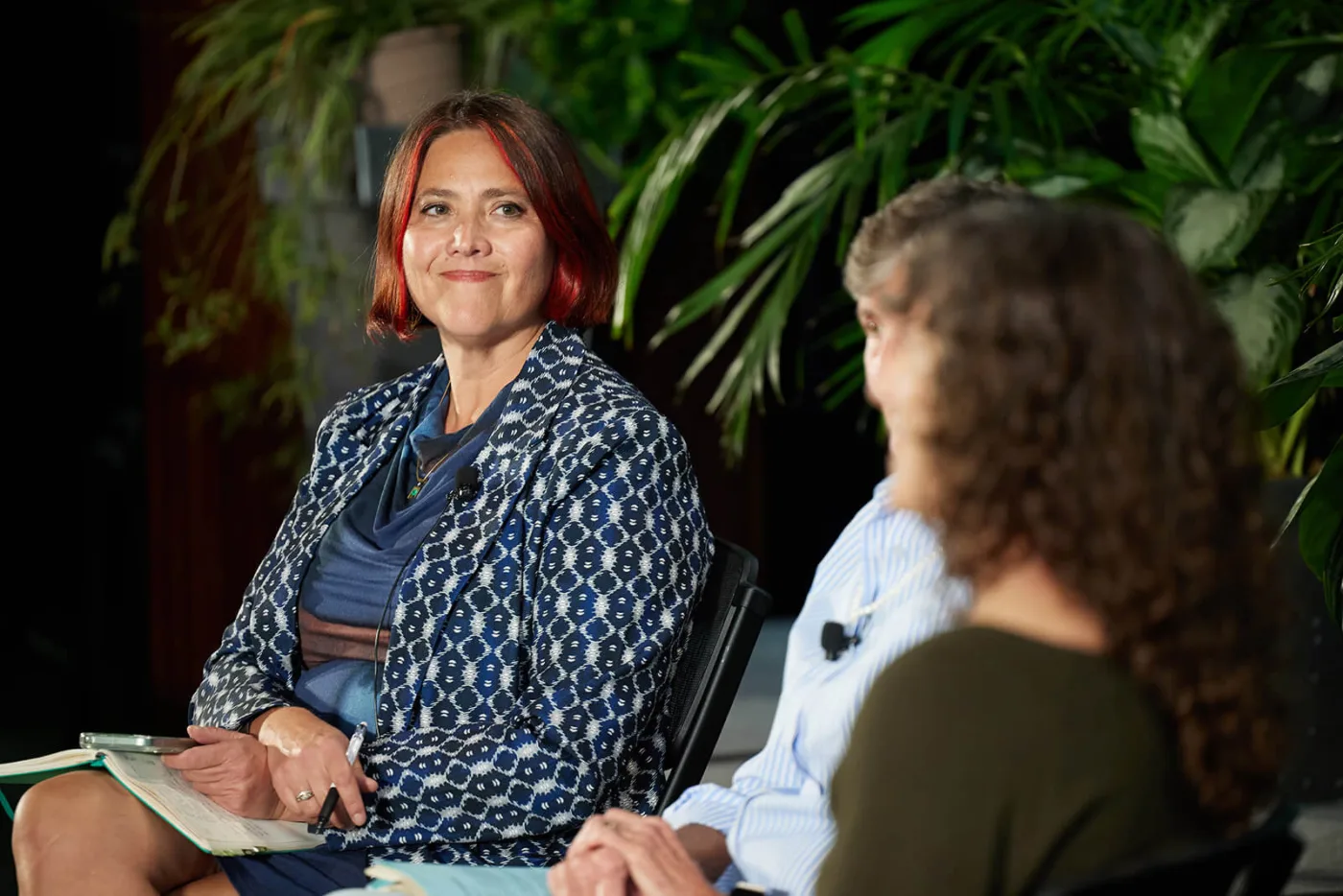Written by Ansje Miller
What is your vision for the future?
At Climate Week, I sensed a shift. People are tired of being on defense. Tired of fighting for slivers of progress while polluting industries keep remaking themselves in the same mold. Funders and advocates alike are ready to take a harder look at this moment, not just from a place of fear but from a place of practical realism and hope for what comes next.
And yet, we left with questions.
Others have found ways to align and organize around an 80% overlap in purpose. What’s our 80%?
How do we move from fragmented “issue silos” — climate, toxics, oil and gas, plastics — to a sense of shared work?
How do we build the connective tissue, the narrative, the infrastructure, the love, that lets us move money and momentum where they’re most needed?
You can’t run communications campaigns without organizing. You can’t fund organizing without collaboration infrastructure. And you can’t sustain collaboration without love.
So what’s love got to do with it?
Couple of weeks ago, HEFN member Robert Wood Johnson Foundation hosted an episode of its podcast series Unscripted: Candid Conversations about Who Gets to Imagine the Future. One of my favorite moments came from futurist Julia Mossbridge, PhD, who shared that the best way to develop foresight—even precognition—is through unconditional love.
Unconditional love means feeling like nothing needs to change inside you or in others in order to love or feel loved. It’s the opposite of scarcity thinking. Mossbridge’s research, funded through RWJF’s Futures program, shows that love expands perception and that people in higher states of unconditional love are actually more accurate in perceiving future events.
As she puts it, “We get so afraid of dreaming because we think our dreams won’t come true. We get so afraid of positivity and hope because we don’t want it to be wishful thinking that we shut ourselves down and only think about today—not 5, 10, 20 years from now. But that’s a disease.”
That’s not just “flower child woo.” It’s research being applied in fields from health to national security.
So again, what’s love got to do with climate, with health, with petrochemicals, with philanthropy?
Everything.
Love is the force that connects across silos, sectors, and time. It’s what lets us care for ancestors and descendants in the same breath. It’s what keeps us at the table even when we disagree. And it’s what makes foresight possible—the ability to imagine futures worth fighting for, and then to build them.
At HEFN, our Healthier Futures for All initiative is one expression of that love. It’s a collective effort to look 10, 20 years ahead and design the philanthropic infrastructure needed for thriving communities and a healthy planet. We’re exploring how to build coordination, shared narrative, and long-term vision across movements. The future is being written right now, and we each have a part in shaping it.
I’m still learning unconditional love for myself, but it’s easy to feel it for this community—for the funders, organizers, scientists, and advocates who keep showing up to reimagine what’s possible. Thank you for bringing your hearts, your resources, and your visions to this work.
May we continue to love each other into a healthier future for all.

